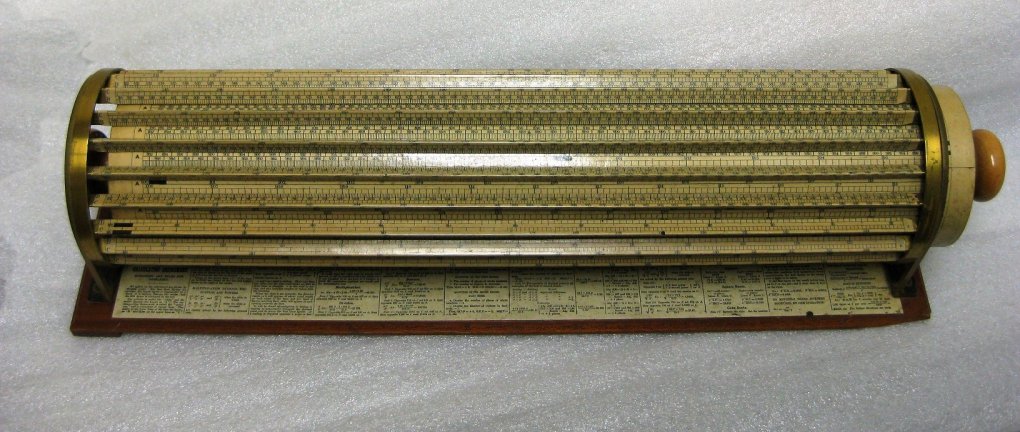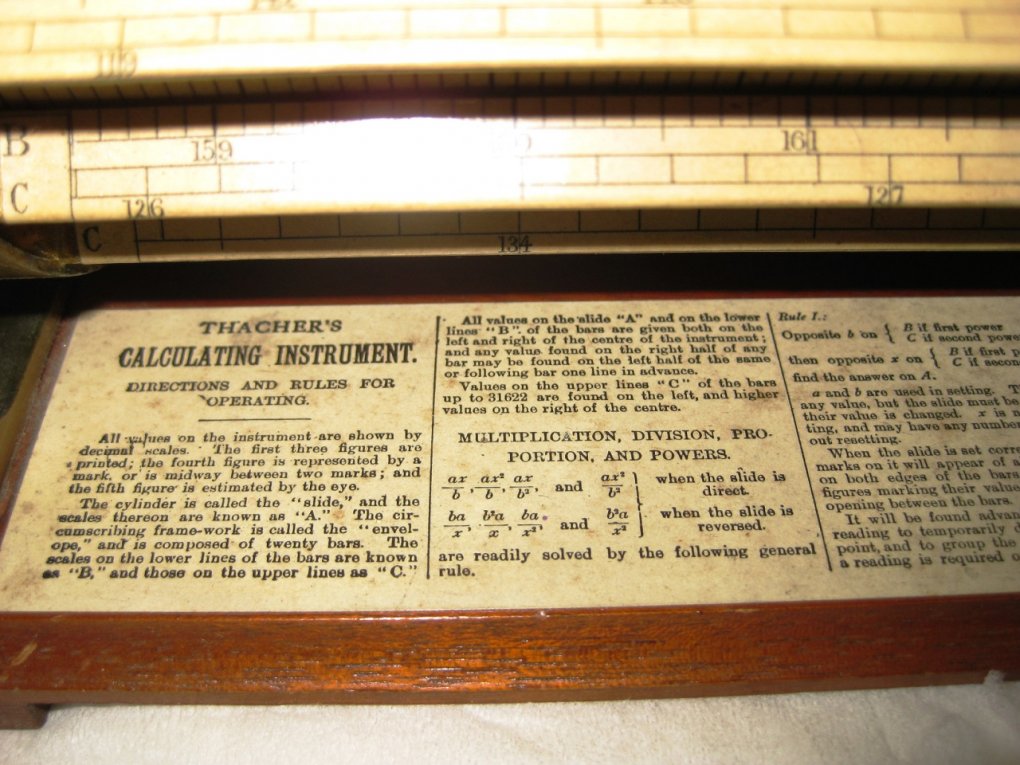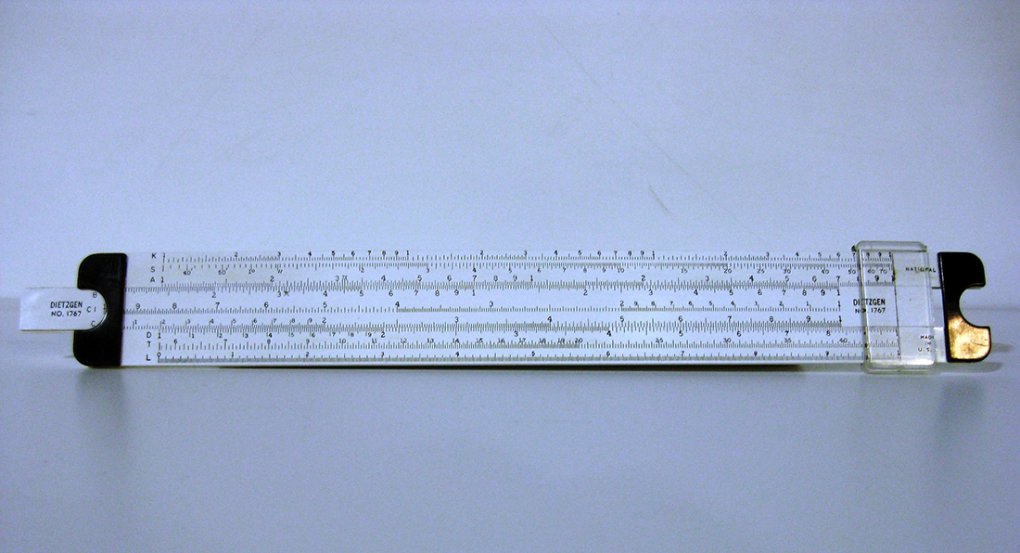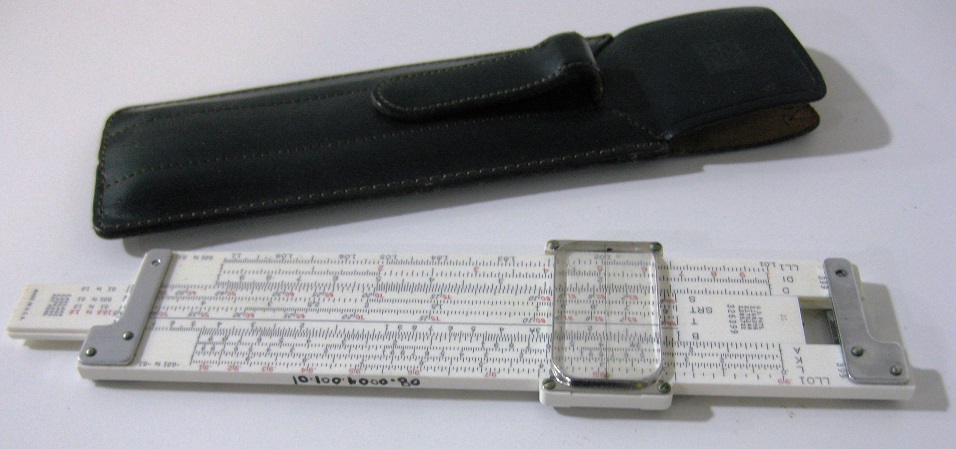Sliding Through Science History
What do Isaac Newton, Thomas Jefferson, Albert Einstein, and Apollo astronauts have in common? They all used slide rules! We're highlighting some of the slide rules in our collection used by scientists at the NIH in their quest to improve human health.
Slide rules were invented in the early 1600s to do complicated calculations and ruled the scientific world until 1972, when Hewlett-Packard came out with its first hand-held electronic calculator. Edwin Thacher patented this design in 1881; Dr. Makio Murayama, NIDDK, rescued it from NIH Surplus about 100 years later.

The cylindrical slide can be moved by rotation or in and out longitudinally. It has twenty triangular wedges on it and two complete logarithmic scales. When the slide is moved to match the wedges, normal slide rule operations are available but with great accuracy (to four figures).

A circular slide rule eliminates the problem of calculations running off the scale because the scale has no end. This 6-inch rule equals a 14-inch straight slide rule in calculation power. John R. Dempster patented the design for the RotaRule, No. AA in 1932.
This rule belonged to Dr. Wallace P. Rowe, chief of the Laboratory of Viral Diseases, National Institute of Allergy and Infectious Diseases, who was the first to isolate an adenovirus from patients and helped to clarify its role in respiratory disease. The rule was a modern tool for Rowe—he often used an abacus for calculations.
Many of Rowe’s research contributions had important and fairly sophisticated mathematical aspects, such as proof of a multi-hit requirement for development of transformed foci in cells infected with Moloney murine sarcoma virus; demonstrating the defective natures of the MSV genome and the role of ‘helper’ virus; quantitative dose response studies that provided evidence for the occurrence of genetic hybrids between SV40 virus and adenoviruses; and the demonstration of differing dose response kinetics to explain control of murine leukemia virus infection in genetically susceptible and restrictive cells.

Plastic slide rules became common in the 1950s, and, like cars, they had different makes and model numbers. The “National” was one model of No. 1767 slide rules made by Dietzgen Co. from 1955-1959. It had K, S, A, B, CI, C, D, T, and L scales on its one printed side to calculate single logarithms and trigonometric and exponential functions, as well as the basic arithmetic functions.
This one belonged to Nobel Prize winner Dr. Julius Axelrod, NIMH, known for his research in the early 1960s on brain chemistry, which is fundamental to understanding depression and anxiety disorders. His work led to the development of modern antidepressant medications called Selective Serotonin Reuptake Inhibitors (SSRIs).

This little slide rule could slip into your pocket, but because it had two sides (a “duplex”) the length of the scales was increased. Keuffel & Esser’s 4181-1 Log Log Decitrig, could be easily used in the laboratory, clinic, or at home. This model was sold from 1953-1972, and packed in many scales: LL02 LL03 DF = CF CIF CI C = D LL3 LL2 (one side) and LL01 L K A = B T ST S = D DI LL1 (the other side). The “Log Log” repetition means that the slide rule has a scale for the logarithm of the logarithm so you can do direct calculations involving roots and exponents. This was especially useful for fractional powers.
Dr. Jacob Robbins, NIDDK, carried this rule with him as he studied the function of the thyroid and pediatric thyroid cancer caused by atomic fallout. His important work demonstrated how to use thyroid hormone as a medication for those with low-functioning or no thyroid glands. Robbins worked at the National Institutes of Health from 1954 until his death in 2008.

Visit us soon to see more slide and circular rules in my next blog entry, including one featured in the novel Have Space Suit Will Travel.
Related Blog Posts
This page was last updated on Wednesday, July 5, 2023
